how to litter train your kitten
What to know about litter box training, cat poop, and cat pee
If you have a cat that spends any time indoors, you need a litter box. (In fact, you’ll probably need two. The general rule for litter boxes is, one for each cat, plus an extra.) Cats are naturally drawn to dry, sandy-ish spots to do their business, so a litterbox is like a big red sign that says, “Do it here!” We’ve got tips on how to pick your litter spot, make it appealing, and keep it clean.
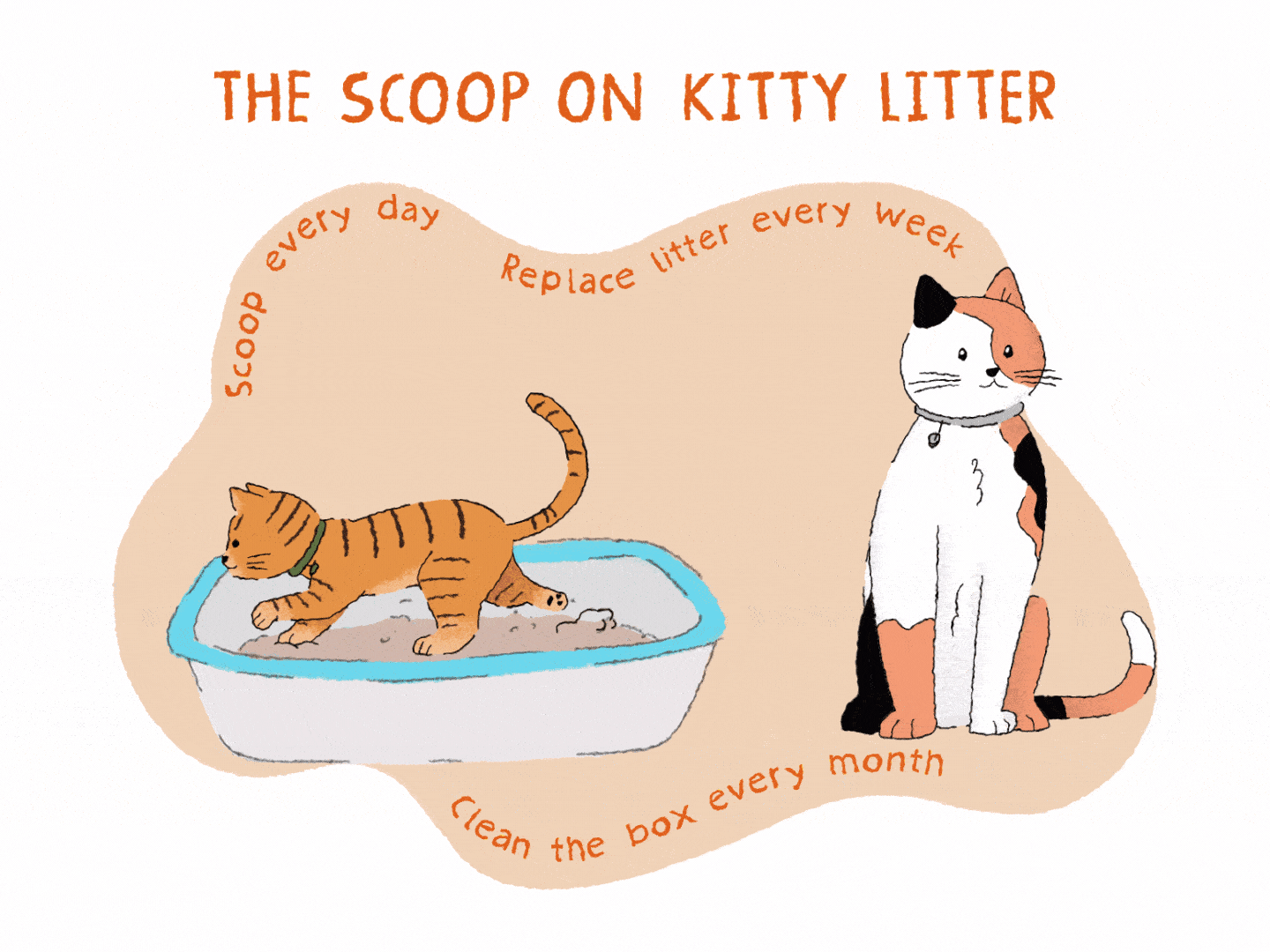
Training kittens to use the litter box
You can start introducing kittens to the litter box when they’re about 4 weeks old. (Their mamas take care of their tushies until then.) If you see your kitty crouching, or sniffing for a place to “go,” move them to their box. Let them sniff around and paw at the sand. If they poop or pee, ignore the impulse to cheer — cats often like a little quiet and privacy at potty time.
It really helps your kittyBAE if their litter box is within easy reach. Keep it filled with nice fresh litter and scoop it every day. And keep tempting piles of soft material, like laundry, out of reach. You really don’t want your cat deciding that unfolded towels make an excellent toilet.
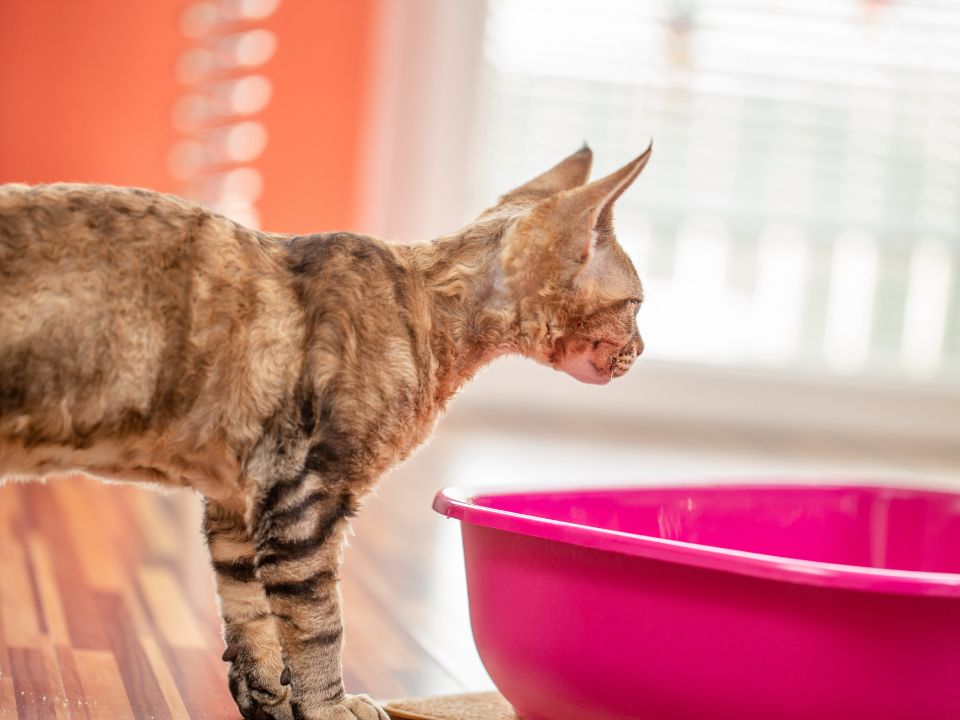
What you need to potty-train a cat
- Litter box (one for each cat in the house, plus one extra)
- Kitty litter
- Poop scoop
- Poop bags if you're using non-flushable litter
- Enzyme cleaner (to clean up and neutralize smelly cat pee)
Picking a good litter box
To start, you want to match your litter box to the size of your cat. Kittens may need a smaller box, with at least one shallow side, so they can easily scramble in and out. They’ll graduate to a bigger box as they grow.
Pick a litter box that’s big enough for your cat to move around without bumping up against the sides. You want one that’s at least three to four inches deep. Because cats usually kick or paw litter over their leavings, a deeper box can help keep litter — and other stuff! — from flying out onto your floor.
Is your kitty a champion litter-kicker? See if they’re willing to use a covered box, or other furniture-type litter solutions. Covered litter boxes can get really stinky if you don’t clean them every day, but they may save you some extra sweeping.
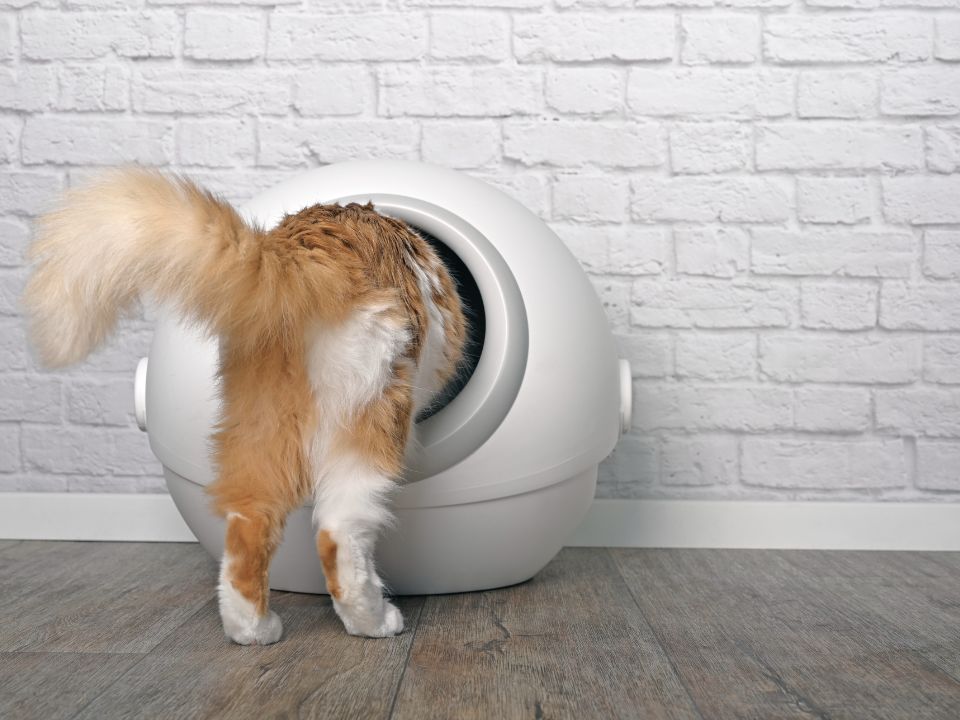
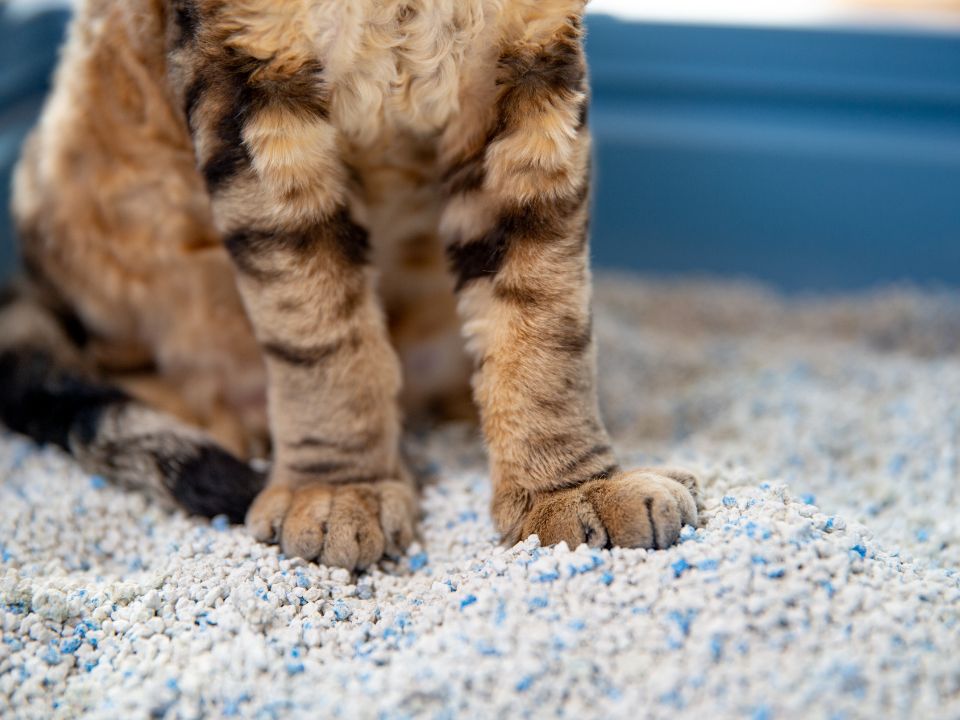
Picking a kitty litter
Once you have your litter box, pour in about one to two inches of kitty litter. You want to cover the entire bottom of the box — too little, and the box gets gross very quickly; too much, and it’s easy to miss goop when you scoop.
Different cats may show preferences for different kinds of kitty litter. In fact, some cats can be downright divas about their litter tray. With kittens, it can help to start off with the kind they first used with their mama. Interested in going eco-friendly? There are many good litters on the market, from shavings to clay pellets and more. Start by using your usual litter, then gradually mix in your preferred litter type.
Many cat owners wonder about scented versus non-scented litter, or if clumping is better than non-clumping. Both are really a matter of your own preference (and what your cat will deign to use). However, kittens should start out with very basic non-clumping litter, so they don’t accidentally eat or inhale anything weird. You can swap that out for clumping or scented when they’re a few months old.
No matter which litter you pick, you should be scooping it every day. Dump out the old litter and put in new litter at least once a week. Wash the tray with enzyme cleaner every month.
Good places to put a litter box
Cats like a bit of peace and quiet when they’re doing their business. They also strongly prefer not to poop where they eat. If you have multiple cats, each cat should have their own litter box in their own space — it’s tempting to line them up in a row, but that’s unlikely to appeal to your kittyBAEs.
DO place your kitty litter box where
- you won't trip over it
- your cat feels secure
- you can check regularly
- your cat doesn't eat or sleep
DON'T place your kitty litter box
- near cat food or water
- where it's hard for your cat to reach
- near sudden or loud noises (like from washers or dryers)
- in a too-dark room
- behind closed doors
Common litter box problems and solutions
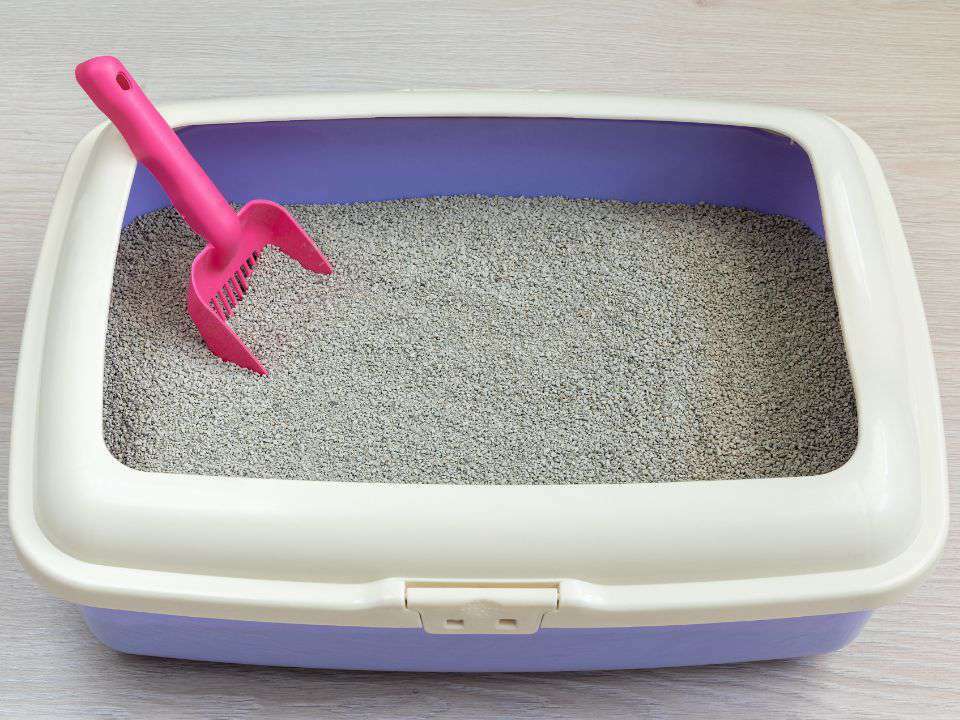
Dealing with smelly litter boxes
If your cat’s litter box smells, change it! The cleaner you keep the box, the less funky it will be (and the more likely it is that your cat will use it). Ideally, you should scoop every day, replace the kitty litter every week, and rinse out the box every month. Use soap and water, or vinegar and water, to clean the box — never harsh cleaning supplies or bleach.
Cat urine is super-stinky because it’s super-concentrated. Even soap and bleach can’t completely remove the smell. This means that once a cat has peed somewhere, they may smell that pee and return again and again — perfect for litter boxes, but not for anyplace else. Happily, there are enzyme cleaners specially designed to tackle this problem. The enzymes break down the pee, helping to eliminate the smell and make the area less tempting to your cat.
Is your cat not bothering to cover their poops or pees? So long as the poop and pee seem healthy, it’s probably not a health issue. Your cat may be claiming their territory. Or maybe they just want you to admire their work. Scoop it and dump it! Problem solved.
Help your cat stop spraying urine
Spraying behavior from male cats doesn’t actually have much to do with litter box issues. Unneutered male cats use their urine to mark their territory. Neutering your boyBAE can help prevent or cut down on this behavior (and save your sofa). You can also try using calming pheromones, or fabric-safe sprays that make your furniture less attractive to marking males.
If your kitty is routinely missing the litter box, however, it may be a health concern. Your first step is to check with your vet. If nothing physical seems amiss, you may need to change their kitty litter more frequently, move the litter box, or add an additional box. These can all help tempt your cat to be tidier at the toilet.
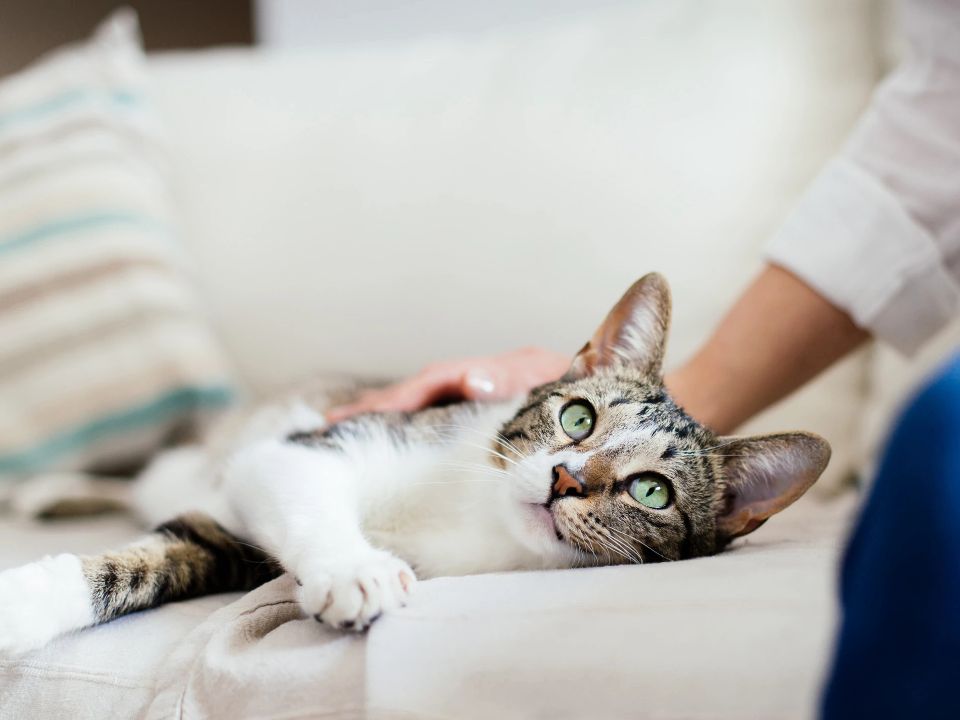
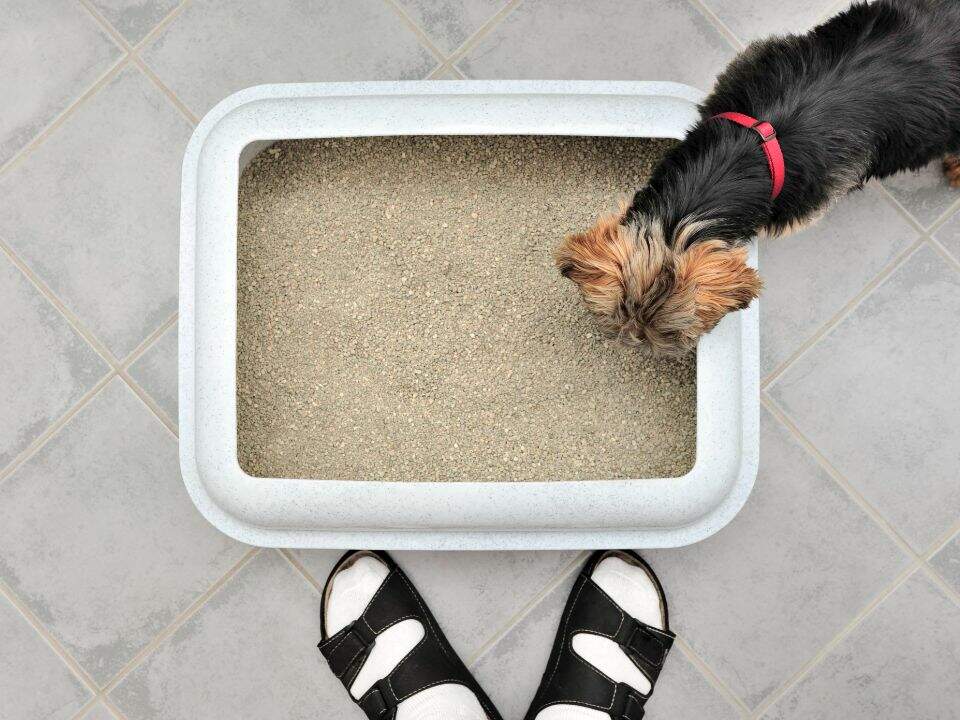
Keep dogs out of the kitty litter
Many dogs enjoy the occasional “kitty roca” from the litter box. Cat poops are full of protein, and they probably won’t hurt your dog — so long as your cat is healthy and doesn’t have worms or other parasites. If you’re concerned (or grossed out), just make sure your dog can’t physically get into the litter box.

How Banfield can help
The (only) good thing about litter box issues is that they give you a chance to check in with your cat. Not using the box or having unhappy poops are signs of stress or illness. And a cat that stops pooping or peeing, or is crying when they “go,” needs immediate veterinary care. We’re here to help your kittyBAE in and out of the litter box. If your cat’s toilet habits change, please contact your veterinary team.
 Mites and mange
Mites and mange Podcast - Not Just Fluff
Podcast - Not Just Fluff
